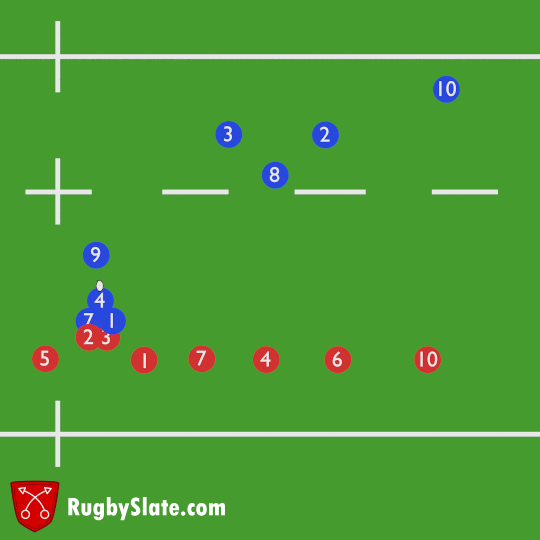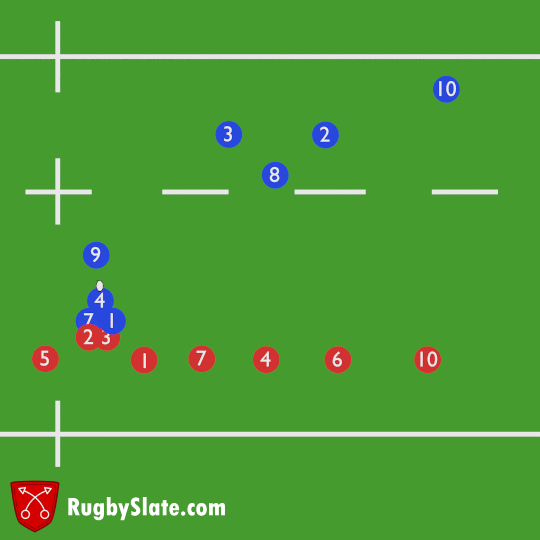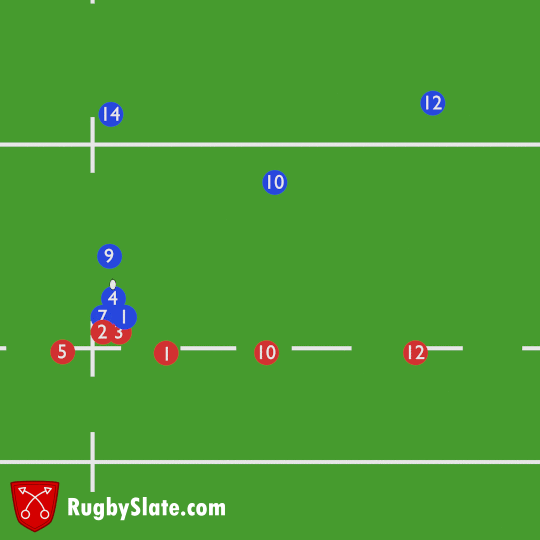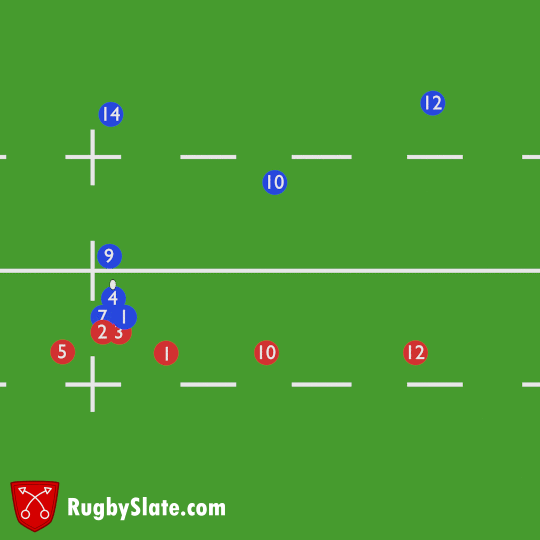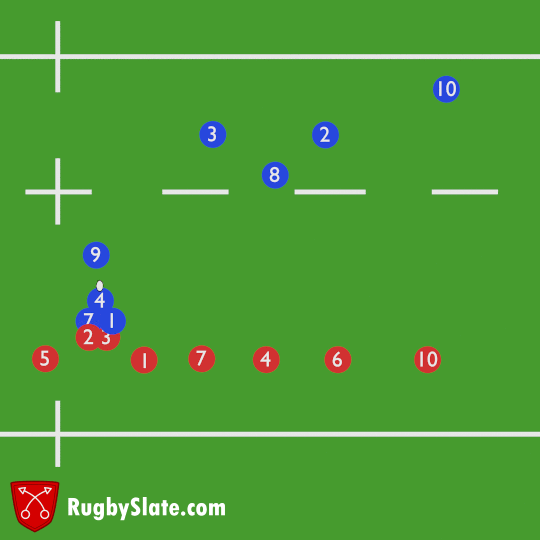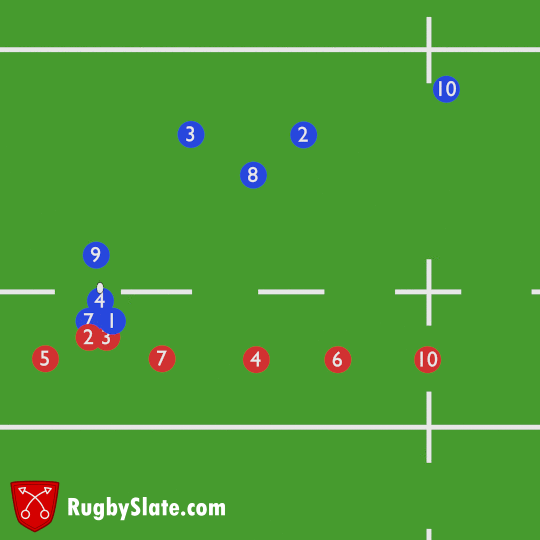Shooter Defence
The shooter defence (also known as the shoot defence or flyer defence) is an aggressive defensive style. It should only really be used by an experienced, well drilled team. It goes against pretty much everything in the Defencive Flat-Lines & Dog-Legs article and therefore can give opportunities to the attacking side. However, if implemented correctly, the defensive side can dominate the opposition, push them back and increase turnover opportunities. Some ideas for this defensive style are taken from the blitz defence. Your team should be very familiar and capable of the blitz defence before implementing the shooter system.
The Shooter
The main idea behind the shooter system is to target the first receiver and tackle them quickly and far behind the gain line. In most cases, it is clear who the first receiver will be, either the 10 or a forward. The defender opposite will be “the shooter”. Their job is to as quickly close down the first receiver. This should be done by a very aggressive blitz. In the case below, the ball carrier is clearly going to be the number 8 due to their positioning, this means that the defensive 4 is the shooter. The 4 will therefore break out of the defensive line and “shoot up” to make the tackle.
As shown above the tackle is made far behind the gain line. Also the rest of the defence is moving forward to the breakdown giving them momentum and therefore a higher chance of stealing the ball. The defending 6 and 7 are able to join the ruck quickly and on the front foot so they will be in a better position than the attacking 2 and 3.
The Supporting Players
In the shooter system, obviously a lot of focus is placed on the player rushing up however, the players around the shooter are critical for the system to work. They have to defend the channel left by the “shooter”. As the player shooting up is rushing up very quickly there is a chance that they will not be able to make the tackle. The players directly either side of the shooter should slightly drift in to fill this gap. In the below example the 4 is stepped but this is easily covered by the 6 and 7. The attacking side still loses some meters as the ball carrier can’t run their normal crash line.
Shooter in Space
Using a shooter style of defence is still possible when there is a lot more space. For example, in the animation below the defending 10 shuts down the attack at the first reciever very quickly. If there was a significant overlap on the outside the defender has stopped this from the attack being able to exploit this.
Weaknesses – Missed Tackles
The example above does however start to show the weaknesses of the shooter defensive system. Big gaps appear behind the shooter which can be attacked in many ways. Firstly if the shooter doesn’t make the tackle they have left a huge space to be attacked. If they remained in line with the rest of the defence, they would have an easier tackle to make and they would get support.
Weaknesses – Offloads
A good attacking side will be able to recognise the use of a shooter. Once they are aware of it, a good option for them is to change the point of attack. A simple offload close to contact with the shooter gives a very good attacking line and a good line break. In the example below, the 3 is the responsibility of the defending 7 but the gap opened up by the shooting may make it too difficult to defend.
Weaknesses – Snipping
As a lot of focus is placed on the first receiver, focus on the scrum half can be lost. A good number 9 may pick and go to test the fringes. If the shooter breaks the line too early the 9 will be able to hit the gap left by the shooter. Again, the defending 7 is responsible but the 4 makes the job a lot harder.
Overall the shooter defensive system can be a very effective, aggressive defending style. Meters can be made without the ball. Turnovers become more likely. The attack have less time on the ball. However there are many weaknesses which can have significant consequences. The shooter defence should only be implemented by teams who understand the strengths and weakness. Also, knowing when to “shoot” or when to just blitz or drift is very important. Typically it should be done where the defence are in a strong position and they want to pressure the attacking side.

